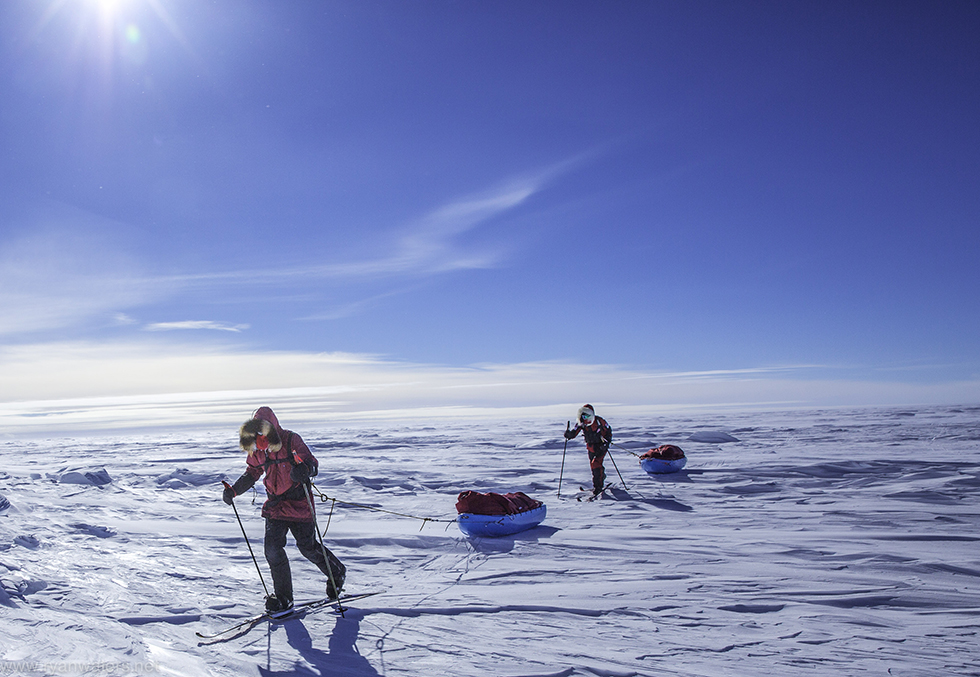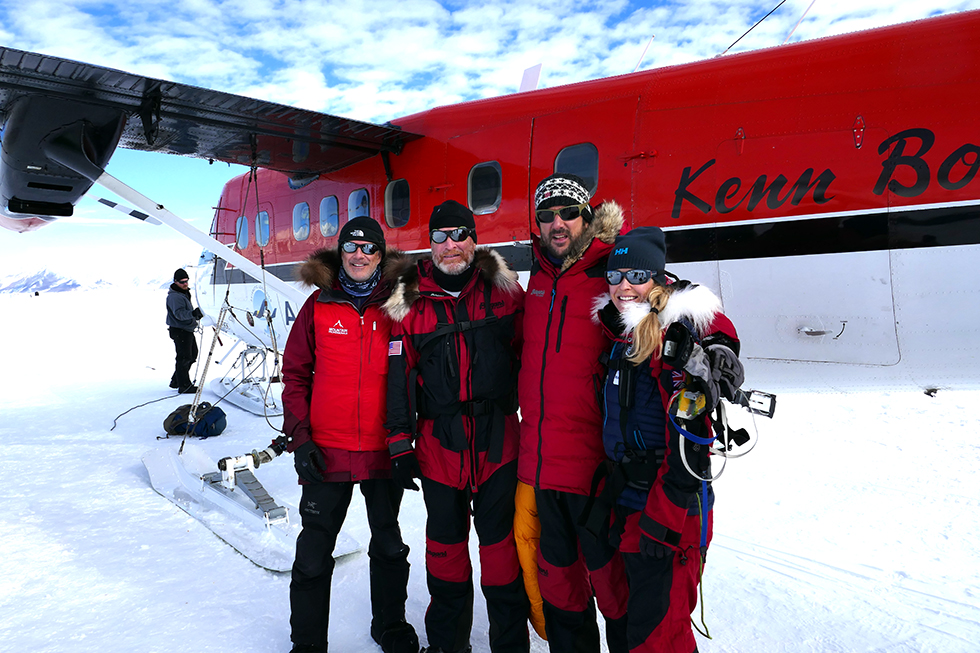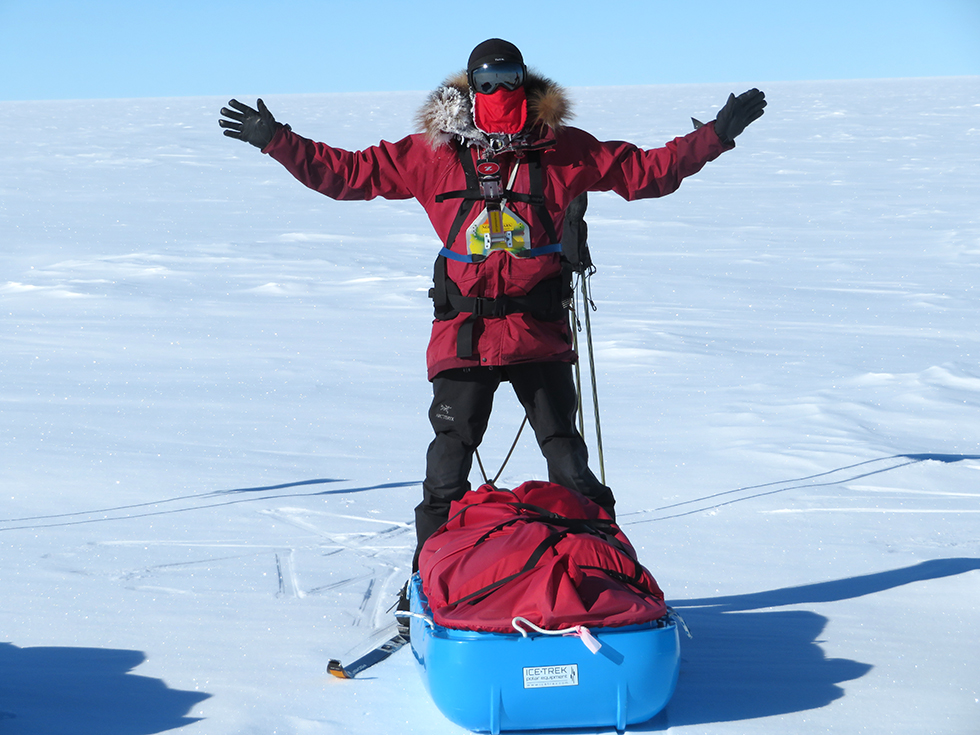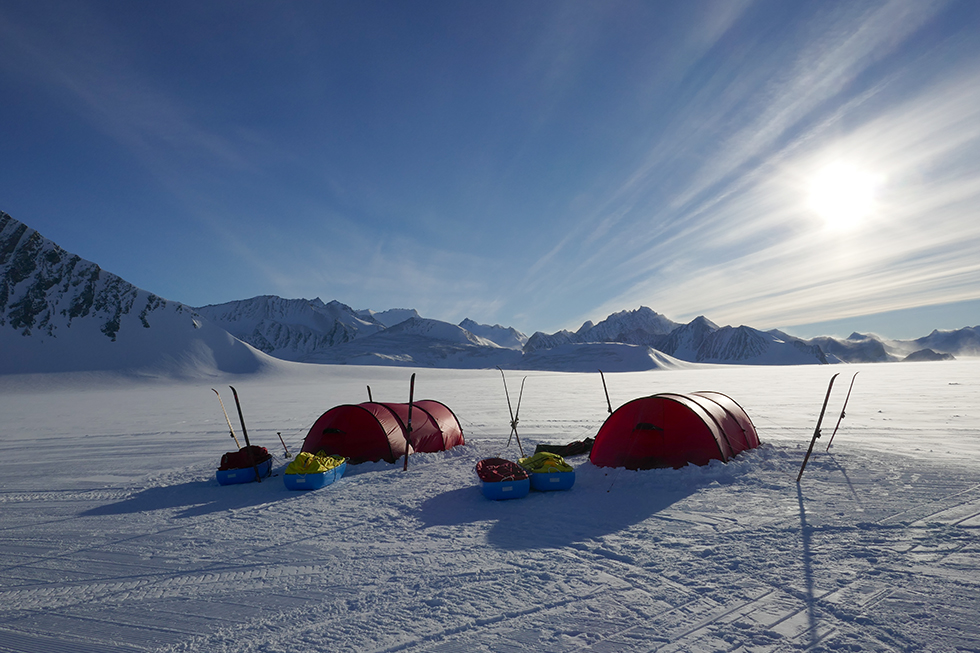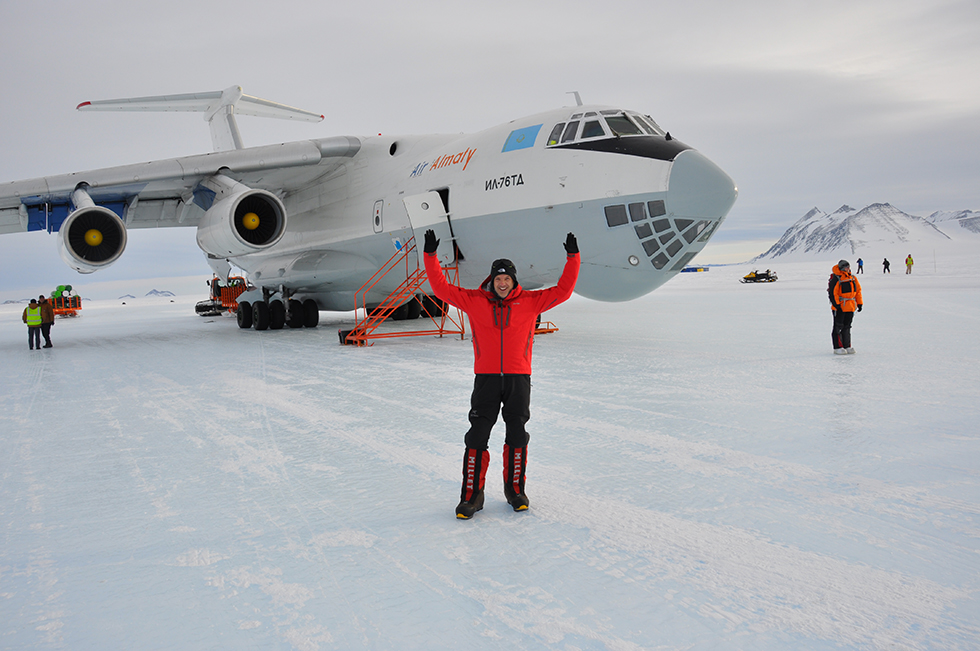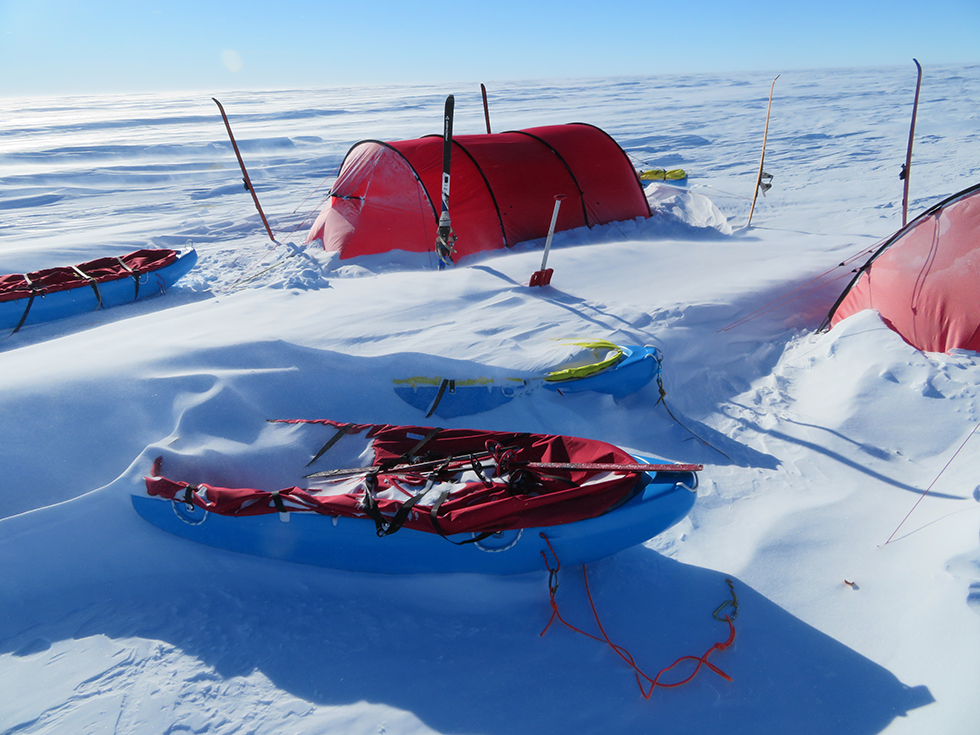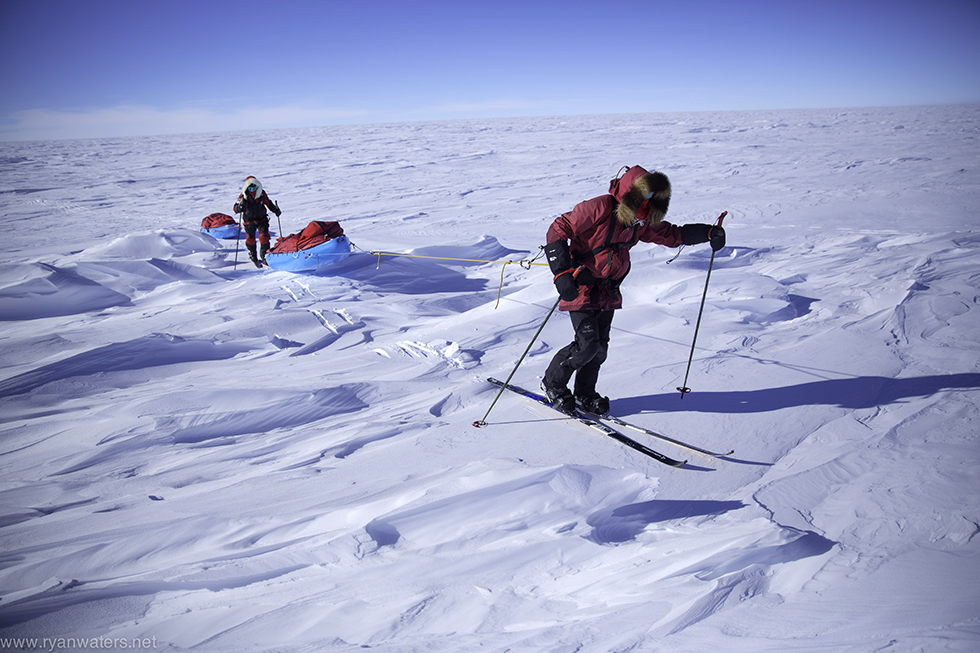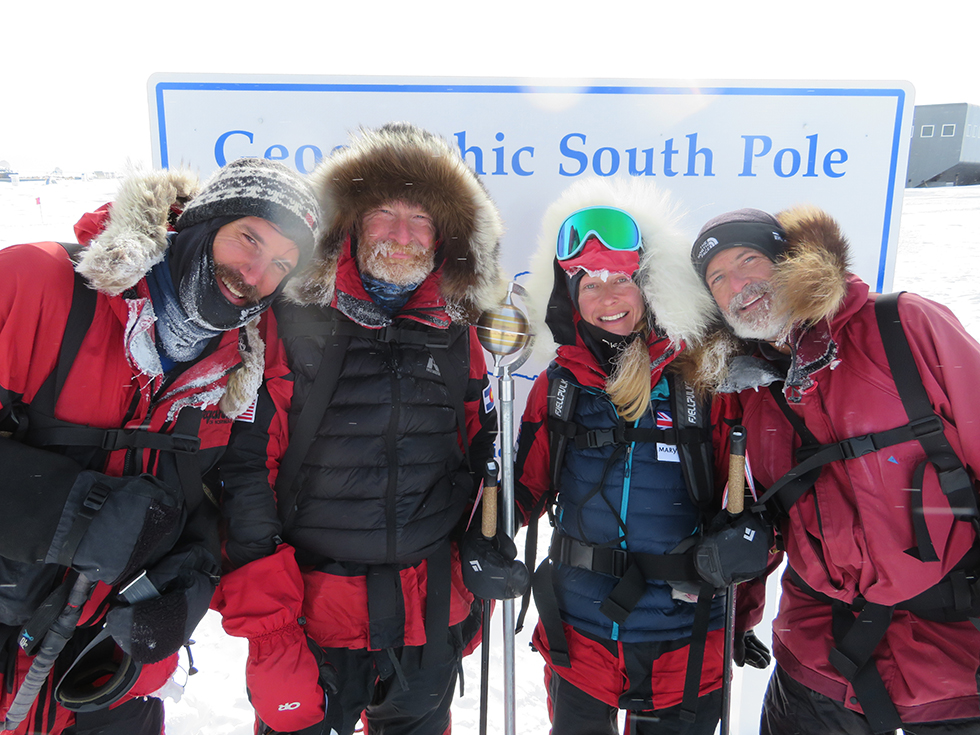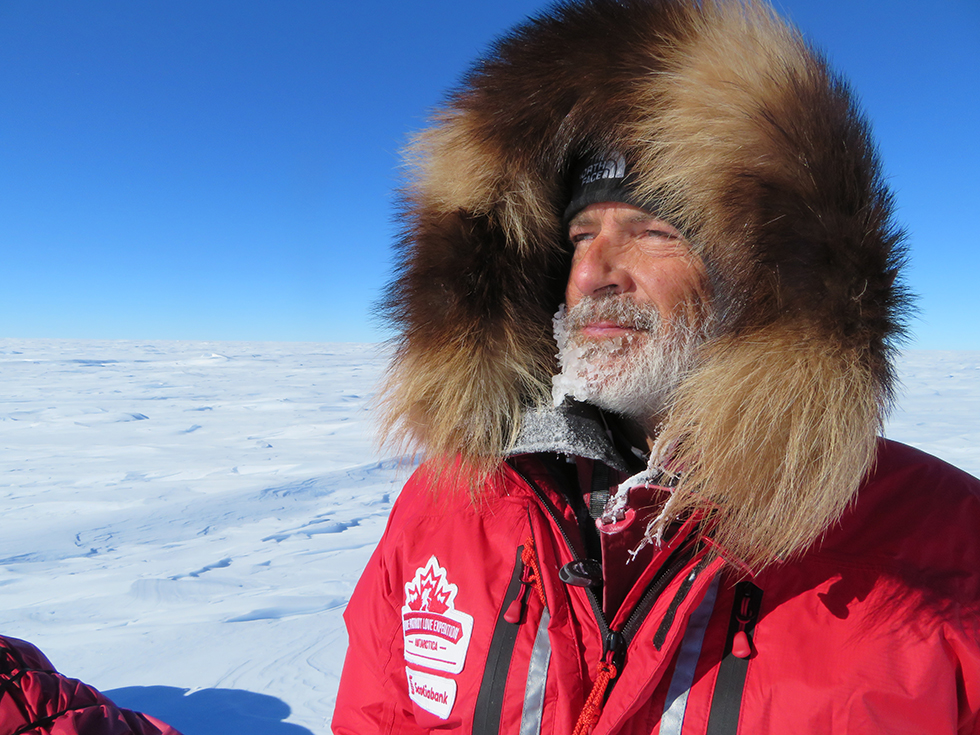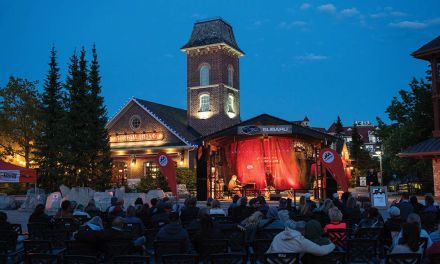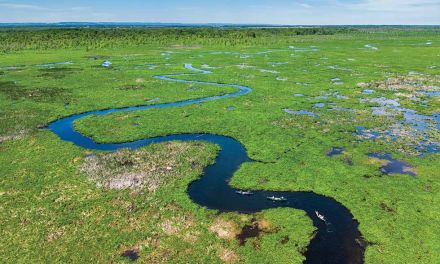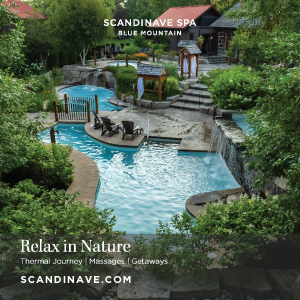Words | Scott Kress
Out of the blue one day, I received an email from my friend Ryan which read, “Hey man, do you want to go back to Antarctica?” Twenty seconds later I replied—”You had me at ‘Hey’”. For almost 30 years I have been climbing, guiding and adventuring around the world. I have been fortunate to have many amazing opportunities and some pretty cool experiences. I have climbed the Seven Summits (the highest peak on each of the seven continents which includes Mount Everest) in addition to countless mountains in the Rockies, Andes, Alps, Himalayas and even some lesser-known ranges. In recent years I have been helping to organize and guide expeditions for True Patriot Love (TPL), a charity based in Toronto that seeks to help our ill and injured Canadian soldiers and war veterans. In my business life I run one of Canada’s most successful team building companies called Summit Team Building. We work with corporations to help them build high performance in individuals, teams and leaders. I have taught at several universities in their MBA and Executive MBA programs and I speak frequently at conferences and meetings sharing stories of my adventures and how to build high performance. I first went to Antarctica to climb Mount Vinson in 2011 and I fell in love with the place. It is such a stark and beautiful continent and one that not many people will ever have the opportunity to step foot on.
I am very fortunate to have been there and I thought that once would be enough for me. Then in January of 2016 I had the chance to go back and guide a team of wounded soldiers to the summit of Mount Vinson as part of the TPL expedition series. So when I received the call from Ryan, I had to pinch myself. I was going to Antarctica again, but this time we would be trekking to the South Pole.
Ryan is a good friend who owns a guiding company called Mountain Professionals based out of Boulder, Colorado. We have done a lot of climbing together over the years including guiding TPL expeditions. Ryan and I had been talking frequently about skiing to the South Pole and we were fortunate to find two additional adventurers to join us, Katrina and Paul. Katrina lives in Chamonix, France and has been climbing and trekking for the better part of 15 years. Paul owns a construction company in Denver, Colorado and climbed Mt Elbrus in Russia with Ryan and I. Both Paul and Katrina were keen to ski to the South Pole and we all knew we could work well together so a team was formed.
We all agreed on the guiding vision for this expedition—if we were going to do this, we would do it the hard way: unsupported and unassisted. These are the true roots of polar exploration and not many people have completed a trek to the South Pole in this fashion. We were not doing this expedition for notoriety or publicity, rather for the love of adventure. Unassisted means we would have no help in forward motion; no dogs, kites, snowmobiles or the like. Only human power. Unsupported means we would have no re-supplies along the way to lighten our load. We would do it all ourselves or not at all.
To prepare for an expedition like this one needs to train physically and mentally. If you break in either of these areas, the trip is over. Mental training is a long game that takes place over years of exposure to risk, stress, pressure, pain and suffering. My long career in the mountains had helped to harden my mind, allowing me to be comfortable being uncomfortable. We have a saying in climbing that is derived from Buddhist teaching “pain is inevitable, suffering is optional”. This is the power of the mind to deal with whatever situation you happen to be in. As for the physical training, I believe the best way to train for any sport is to play the sport or mimic it as best as possible. Since we would be pulling 200+ lb sleds across Antarctica for close to 1000km I had to train for pulling. I went to a local tire shop and got two big truck tires destined for the landfill. I drilled holes in them to connect metal loops and ropes and strapped them to my backpack harness and began to drag, up and down the streets of my Toronto neighbourhood. Yes, my neighbours thought I was either crazy or one of those way too obsessive fitness freaks. I dragged these tires countless times around the streets and up any hill I could find. It was punishing work, but I knew it would pay off in Antarctica.
On November 11, 2016 I flew to Punta Arenas, Chile to meet up with the gang. We would spend a few days in town buying and packing food, checking over all our gear, and checking any last minutes items off our to-do list. On November 15 we boarded our flight for Antarctica. This is the Antarctic summer and really the only time you can safely do a trip such as this. The winter is long, very cold and dark. The summer is blessed with 24 hours of sunlight and relatively warm temperatures of -25°c.
The four-hour flight took us to Union Glacier, which is the main staging camp for climbing, skiing, and other “recreation” in Antarctica. From here we flew in a 1964 Twin Otter fitted with skis to our drop off location on the Ronne Ice Shelf at 82°S 65°W. We were now 960km from the South Pole. 45-days of travel was our plan, but we had supplies for 50 days and we could stretch that to 60 days if necessary. We would use cross-country skis to give us stability and traction as we dragged our 110kg sleds across the unforgiving ice and snow.
Since you need to be able to pull everything you take on this expedition, packing light is essential. Toothbrushes were cut in half. I packed two pair of underwear and two pair of socks for 50 days of polar trekking. Anything that was not essential was left behind. We loaded our clothing, tents, cooking gear, sleeping bags, food and fuel into our specially designed sleds. For skis I used a typical cross-country ski with a specially designed polar binding from my friend Richard Webber (Canada’s foremost polar explorer). This binding consisted of a hinged metal plate with a strap system to hold your boot on. This binding allowed me to wear an extreme style winter boot (like a Baffin or Sorel boot many of us wear in the winter) so I had no fear of frostbite on my feet. We started off slowly to give our bodies time to acclimatize to the weather and to the constant physical exertion of pulling our sleds for up to 10 hours a day. We kept a very strict routine and had clear roles and responsibilities to ensure nothing was missed and that we kept on track. Each of us would take turns in the lead and at the end of each pulling day we would set up our camp to eat and rest; two very important elements in an endurance contest like this. Eating on a trek to the South Pole is not done so much for enjoyment, but more as a job. We would burn 5000-7000 calories a day and we had to replace as much of that as possible. Breakfast consisted of hot chocolate, a chocolate bar, a huge bowl of oatmeal with nuts, dried fruit, butter, olive oil, and more chocolate. We did not really have a lunch, but we packed a daily bag of super trail mix that we would snack on constantly throughout the day. Once at camp we would start dinner with salami, cheese and crackers, wash that down with soup and hot chocolate and then have a double helping of a freeze-dried meal. It was a test of determination to finish your food every day and even with this we all lost 10% or more of our body weight.
For about the first 450km we were skiing on a slight angle to traverse around the Pensacola Mountains. This was pretty hard going due to the extremely rough snow conditions created by the constant katabatic or gravity fed, wind in Antarctica. As the wind currents travel around our planet they drop onto the South Pole. As the South Pole sits at about 2800m this air then travels downhill pulled by gravity to the ocean. As we were going towards the pole this meant that we skied into the wind the entire way. It has been said that in Antarctica, you do not need a compass to go to the South Pole. You just have to ski into the wind and you will eventually get there. The other challenge the wind brings with it, is the snow features it creates called sastrugi. Sastrugi is a Russian word meaning parallel wave-like ridges that form on the surface of hard snow due to wind. These rock-hard snow ridges can be anywhere from 10cm to 2m tall and could be spaced 1-2m apart or closer. As we were pulling on a 30° angle across the sastrugi the effect was like pulling a sled through a field of speed bumps. These features made the pulling very difficult, as any small bump would create a barrier for the sleds.
The first few weeks were the toughest from a mental perspective. Each day is basically the same. We would wake at 6am, eat and break camp. By 7:45 we were on our skis and ready to go. We would ski 8-10 ski blocks a day (60 minutes makes up one block) followed by a 10- minute break after each block. The view was always the same. We said it was like skiing inside a giant ping-pong ball. And then on some days we had no visibility at all. When the clouds would come in the light would become extremely flat and we would lose all sense of direction. The compass was critical as each direction looked identical and there were no landmarks or objects to aim for. If you looked up towards the horizon for too long you would get vertigo, lose you balance and fall over. To keep us moving forward, we would each take turns in the lead as this was the most challenging position. The leader was responsible for setting the course, breaking the trail, setting the pace, and keeping track of moving time and break time. While we were moving we actually got quite warm. Maybe it has something to do with dragging 110kg sleds across horrible terrain… but once we stopped for our 10-minute break we got really cold, really fast. By the time we started moving again we would be shivering and our hands would be so cold they felt like wood. This was a pattern we would repeat all day long. While this may seem difficult from a physical perspective (and it was), the more challenging part was the mental endurance. When in motion we couldn’t really speak to one another and during breaks we were too tired and too cold to talk. Step after step we just had to push forward and it was tough to know what to do with your mind. I tried several different strategies starting with meditation—trying to banish all thought from my mind, but soon found meditation was not working for me. I then tried to think in-depth about something and that didn’t work either.
In the end, after about 10 days of mental learning, I landed on just letting my mind wander free flow. I found this to be an almost trance like state that allowed me to endure long, hard, cold days with relative ease. At first time seemed to go so slowly and it felt like we would never reach the South Pole, but then one day we hit a month on the trail and the days just seemed to go by. The daily stress on our bodies began to take a toll and we experienced a breakdown from repetitive use injuries, blisters, and cold injuries. Pain killers became the snack of choice. We had been warned that the snow conditions would get really bad from 86.5° to 88.5° and did it ever. At first it didn’t seem so bad, but then the sastrugi took on a size, shape and regularity that was unlike anything we had encountered so far. We nicknamed this part of the trip “the Gates of Hell”. Our daily effort increased tremendously and our mileage dwindled. Mentally and physically we were entering the toughest part of the trip, but the thought of better ground once we reached the Polar Plateau at 89° kept us going. Unfortunately, the promised good conditions never appeared, and we struggled right to the very end.
After 43 days, 3 hours and 30 minutes we reached the South Pole. We were excited and relieved at the same time. We arrived at the South Pole on December 30 and to top off our amazing experience we spent New Year’s Eve at the South Pole. How cool is that? After a couple of days at the South Pole to recuperate, relax and take it all in we were picked up by an ancient DC3 and flown back to Union Glacier and we then started to make our way home. All in all, it was the most challenging trip of my life and we all said we’d never do it again. However, our memories of suffering were short as within 24 hours of being back in Chile we were all saying, “Yes, I would do that again”. I have had the opportunity to travel to and explore some pretty cool (literally and figuratively) places in my life and Antarctica is on the top of that list. I don’t know if I will ever get back to Antarctica, but I know there are many more amazing adventures on the horizon.

